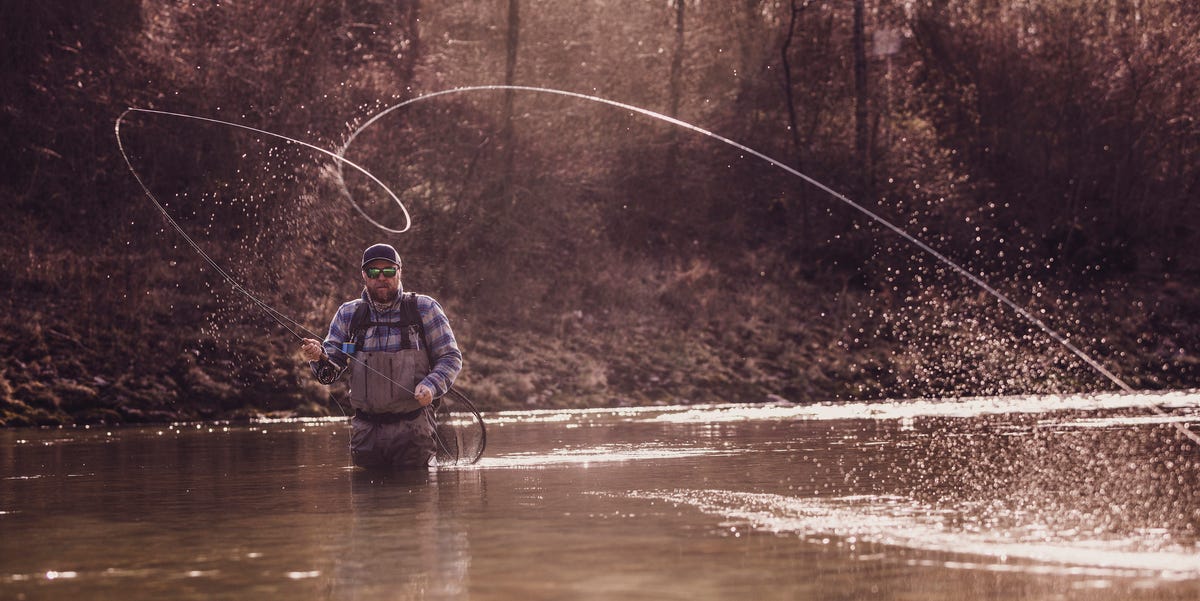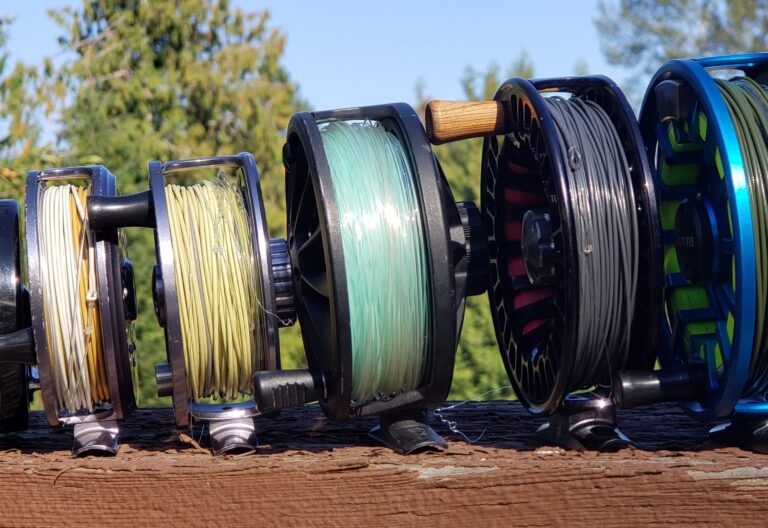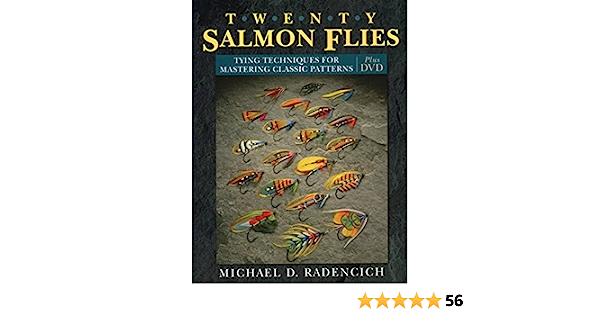To clean and maintain your fly fishing reel, start by rinsing it with freshwater after each use to remove dirt and debris, then wipe it dry with a cloth. Apply a small amount of reel oil to the moving parts to keep them lubricated and prevent rust.
Regularly inspect the reel for signs of wear or damage and replace any worn or broken parts as necessary. Proper cleaning and maintenance will ensure the longevity and optimal performance of your fly fishing reel. Fly fishing reels are essential tools for any angler, and proper cleaning and maintenance can greatly extend their lifespan.
By following a few simple steps, you can ensure that your reel stays in top condition and continues to provide smooth operation while out on the water. In this guide, we will outline the necessary steps to clean and maintain your fly fishing reel, from rinsing and drying to oiling and inspecting. By dedicating a little time and effort to this routine, you can enjoy many successful fishing trips and keep your reel functioning at its best. So, let’s dive into the details of reel maintenance and keep your fly fishing reel ready for action whenever you need it.

Credit: www.popularmechanics.com
Importance Of Regular Cleaning And Maintenance
The Role Of A Properly Maintained Fly Fishing Reel
A fly fishing reel is an essential piece of equipment that helps anglers effectively handle their lines and engage in successful casting. Just like any other tool, it requires regular cleaning and maintenance to ensure optimal performance. Neglecting proper care can result in damage to the reel and potentially hinder your fishing experience.
Here’s why regular cleaning and maintenance play a crucial role in prolonging the lifespan of your reel.
- Preventing corrosion: Exposure to water, dirt, and debris can lead to the buildup of rust and corrosion on your reel’s components. Regular cleaning removes these contaminants, safeguarding the reel against damage.
- Maintaining smooth operation: Proper maintenance keeps the reel’s moving parts lubricated, ensuring smooth and efficient performance. By regularly cleaning the reel, you prevent friction and wear, allowing for seamless line retrieval and casting.
- Identifying issues: Through routine cleaning and maintenance, you have an opportunity to inspect your reel closely. This enables you to detect any signs of wear, damage, or malfunction early on, allowing for timely repairs or replacements.
- Preserving drag system: The drag system is a crucial part of a fly fishing reel, responsible for controlling the tension on the line during fights with strong fish. Regular maintenance helps in preserving the effectiveness of the drag system, ensuring consistent and reliable settings.
Benefits Of Regular Cleaning And Maintenance
Maintaining a clean and well-maintained fly fishing reel brings numerous benefits that enhance your overall fishing experience. Here are some advantages to keep in mind:
- Improved durability: Regular cleaning and maintenance prevent unnecessary wear and tear on your reel, extending its lifespan. By being proactive in caring for your reel, you can expect to use it for more seasons to come.
- Enhanced performance: A well-maintained reel performs optimally on the water, giving you increased control and accuracy when casting. You can depend on a smoothly operating reel to deliver consistent retrieves, resulting in a more enjoyable fishing experience.
- Cost savings: Taking care of your fly fishing reel helps you avoid expensive repairs or replacements. By investing a little time in regular maintenance, you can avoid major issues and keep your reel working efficiently.
- Reliable fishing partner: Regular cleaning and maintenance ensure that your reel is always ready for action. Knowing that your equipment is properly cared for gives you peace of mind and allows you to focus on the excitement of casting and reeling in your catch.
Extending The Lifespan Of Your Reel
Cleaning and maintaining your fly fishing reel on a regular basis can significantly extend its lifespan. Consider the following tips to ensure your reel serves you well for years to come:
- Follow manufacturer guidelines: Familiarize yourself with the specific cleaning and maintenance recommendations provided by the reel manufacturer. Their guidelines will help you understand the best practices for taking care of your particular reel model.
- Rinse after use: After each fishing trip, rinse your reel with fresh water to remove any saltwater, dirt, or debris. Gently rotate the spool to ensure thorough rinsing of all components.
- Clean intervals: Depending on your fishing frequency and environmental conditions, aim to clean your reel thoroughly every few months or as necessary. Regularly inspect the reel for any signs of grime, buildup, or damage.
- Lubrication: Apply a high-quality reel lubricant to the appropriate parts as recommended by the manufacturer. This helps maintain smooth operation and protects against friction and corrosion.
- Proper storage: Store your reel in a cool, dry place away from direct sunlight. Consider using a protective reel case or bag to safeguard it from dust, moisture, and potential damage.
By following these simple cleaning and maintenance practices, you can maximize the lifespan and performance of your fly fishing reel, ensuring countless successful fishing outings on the water. So, remember to clean and maintain your reel regularly to enjoy the full benefits it has to offer.
Happy fishing!
Tools And Materials Needed
Essential Tools For Cleaning And Maintaining Your Fly Fishing Reel:
- Soft brush or toothbrush: Use a soft-bristled brush to gently remove dirt and debris from the exterior of your reel.
- Microfiber cloth: A microfiber cloth is ideal for wiping down and drying your reel after cleaning.
- Q-tips or cotton swabs: These are perfect for reaching small and delicate areas such as crevices and corners.
- Reel grease: Apply grease to gears and other moving parts to keep them lubricated for smooth operation.
- Reel oil: Use oil to lubricate bearings, joints, and other friction points to reduce wear and tear.
- Screwdriver set: Have a set of different-sized screwdrivers handy for removing and reassembling reel components.
- Reel cleaning solvent: Use a specialized cleaning solution designed for fly fishing reels to remove dirt, grime, and old lubricants.
Selecting The Correct Cleaning Agents And Lubricants:
- Read the manufacturer’s instructions: Different reel models may have specific recommendations for cleaning agents and lubricants. Always refer to the manufacturer’s guidelines before applying any products.
- Avoid using harsh chemicals: Opt for reel cleaning solvents and lubricants that are specifically formulated for fishing reels. Avoid household cleaners or solvents that may damage the reel’s components.
- Compatibility with reel materials: Consider the type of materials used in your reel, such as aluminum, stainless steel, or composite parts. Ensure that the cleaning agents and lubricants are compatible with these materials to prevent damage.
Understanding The Specific Needs Of Your Reel Type:
- Fly fishing reel types: There are different types of fly fishing reels, such as single-action, multiplier, or automatic reels. Understand the specific features and mechanisms of your reel to know how to clean and maintain it effectively.
- Saltwater vs. freshwater reels: Saltwater reels may require more frequent cleaning and maintenance due to the corrosive nature of saltwater. Ensure that you use appropriate cleaning agents and lubricants to protect your reel from saltwater damage.
Optional Tools And Accessories For Reel Maintenance:
- Reel storage case: A protective reel storage case can prevent dust and dirt from accumulating on your reel when not in use.
- Spare parts: Having spare parts such as drag washers, screws, or springs can be beneficial for quick repairs or replacements.
- Reel cleaning kit: A comprehensive reel cleaning kit often includes specialized brushes, cleaning solutions, lubricants, and instructions. These kits can simplify the cleaning and maintenance process.
- Rod and reel combo kit: Investing in a rod and reel combo kit can provide you with all the necessary tools for cleaning and maintaining your reel in one convenient package.
Remember, proper cleaning and maintenance of your fly fishing reel are crucial for its longevity and optimal performance. By using the right tools, selecting suitable cleaning agents and lubricants, understanding your reel’s specific needs, and considering optional accessories, you can ensure that your reel remains in excellent condition and ready for your next fishing adventure.
Step-By-Step Guide To Cleaning And Maintaining Your Reel
Taking care of your fly fishing reel is essential to ensure its longevity and smooth performance. Regular cleaning and maintenance can help prevent dirt, debris, and corrosion from affecting its functionality. In this step-by-step guide, we will walk you through the process of cleaning and maintaining your reel to keep it in optimal condition.
Safely Removing The Reel From The Fishing Rod
When it’s time to clean your fly fishing reel, follow these steps to safely remove it from your fishing rod:
- Loosen the drag knob to reduce tension on the line.
- Remove the fly line from the reel spool by unwinding it carefully.
- Unscrew the reel’s locking nut or release mechanism, depending on the type of reel you have.
- Lift the reel away from the rod slowly and gently to avoid any damage.
Disassembling The Reel For Thorough Cleaning
To clean your reel thoroughly, you need to disassemble it. Here’s how to do it:
- Refer to the manufacturer’s instructions for your specific reel model, as disassembly procedures may vary.
- Begin by removing the spool from the reel frame.
- Take note of the order in which you remove the components, as this will make reassembly easier.
- Remove the drag knob, handle, and any other removable parts carefully using the appropriate tools.
Cleaning The Reel’S Components With Appropriate Agents
Proper cleaning agents are crucial to remove dirt, grime, and salt residue from your reel’s components. Here’s how to clean each part effectively:
- Use warm, soapy water and a soft brush or cloth to clean the reel frame, spool, and other non-greased parts.
- For greased components like gears and bearings, choose a reel cleaner or degreaser specifically designed for fishing reels.
- Dip a clean cloth or brush in the cleaning agent and gently scrub each component to remove any dirt or debris.
- Rinse all the components thoroughly with clean water to ensure no residue is left behind.
Inspecting And Replacing Any Damaged Or Worn Parts
Regular inspection is vital to identify any damaged or worn parts that may affect your reel’s performance. Here’s what you should do:
- Examine the reel’s components, paying close attention to the gears, bearings, drag system, and any other moving parts.
- Look for signs of corrosion, wear, or damage such as rust, cracks, or excessive play in the gears.
- If you notice any issues, consider contacting a professional or the reel manufacturer for advice on replacement parts.
Properly Lubricating The Reel For Smooth Operation
Lubrication is essential to maintain smooth operation and protect your reel from corrosion. Follow these steps to lubricate your reel correctly:
- Use a reel lubricant or oil that is compatible with your reel’s components.
- Apply a small amount of lubricant to the gears, bearings, and other moving parts using a clean cloth or brush.
- Make sure to distribute the lubricant evenly and avoid applying too much, as excess grease can attract dirt and debris.
Reassembling The Reel And Conducting Final Checks
After cleaning and lubricating your reel, it’s time to reassemble it and perform some final checks. Here’s what to do:
- Begin by carefully placing the reel’s components back in their correct positions, following the reverse order of disassembly.
- Tighten any screws or nuts securely, but be careful not to overtighten, as this may damage the reel.
- Check the reel’s functionality by turning the handle and inspecting the drag system for smooth operation.
- Test the reel with some line tension to ensure everything is functioning correctly.
By following this step-by-step guide, you can properly clean and maintain your fly fishing reel, ensuring optimal performance on your next fishing trip. Remember to consult your reel’s manufacturer instructions for specific details and recommendations to keep your reel in top shape.
Happy fishing!
Additional Tips For Effective Maintenance
Storing Your Fly Fishing Reel Properly:
- Store your fly fishing reel in a cool, dry place to prevent corrosion and damage.
- Avoid exposing your reel to extreme temperatures or direct sunlight, as it can weaken the components.
- Consider using a reel case or bag to protect your reel from dust, dirt, and moisture.
- Remove the line from the reel before storing it for an extended period to prevent line memory and damage.
Regularly Inspecting The Reel For Signs Of Damage Or Wear:
- Check for any visible signs of wear, such as scratches, dents, or loose screws.
- Examine the reel’s handle, spool, drag knob, and housing for any damage or signs of corrosion.
- Make sure the reel’s drag system operates smoothly without any grinding or sticking.
- Inspect the line guide and anti-reverse mechanism for proper functioning.
Avoiding Common Mistakes That Can Harm Your Reel:
- Do not submerge your reel in water without proper maintenance.
- Avoid using harsh chemicals or solvents that can damage the reel’s finish.
- Always dry your reel thoroughly after fishing, especially if it was exposed to saltwater.
- Refrain from overtightening the drag system, as it can lead to premature wear and damage to the reel.
Cleaning And Maintaining The Reel’S Drag System:
- Use a soft cloth or toothbrush to remove dirt, debris, and grime from the drag system.
- Apply a small amount of reel oil or lubricant to ensure smooth operation.
- Inspect the drag washers for wear and replace them if necessary.
- Follow the manufacturer’s instructions for proper cleaning and maintenance.
Seeking Professional Help When Needed:
- If you are unsure about any aspect of maintaining your fly fishing reel, consult a professional.
- Experienced technicians can provide expert advice and repair services.
- It is better to seek assistance to prevent causing further damage to your reel.
Remember, by properly storing, inspecting, avoiding common mistakes, cleaning the drag system, and seeking professional help when needed, you can ensure that your fly fishing reel performs optimally for years to come.
Frequently Asked Questions (Faqs)
How Often Should I Clean My Fly Fishing Reel?
Keeping your fly fishing reel clean is essential for its performance and longevity. However, the frequency of cleaning may vary depending on how often you use your reel and the conditions in which you fish. Here are some key points to keep in mind:
- Regular cleaning: It is recommended to clean your fly fishing reel after every fishing trip or at least once a month.
- Frequency based on usage: If you fish in saltwater environments or frequently encounter dirt, sand, or debris, you may need to clean your reel more often.
- Prevention is key: Regular cleaning helps prevent the buildup of grime, dirt, and salt that can damage your reel over time.
- Inspection before cleaning: Before cleaning your reel, visually inspect it for any visible signs of damage or wear. This will allow you to address any issues before they worsen.
Can I Use Regular Household Cleaning Products?
When it comes to cleaning your fly fishing reel, it is important to use the right products to prevent any damage. Here’s what you need to know:
- Avoid regular household cleaners: Do not use regular household cleaning products such as bleach, abrasive cleaners, or solvents on your reel. These can cause damage to the delicate components and finishes.
- Use reel-specific cleaning solutions: Opt for specialized reel cleaning solutions that are designed to remove dirt, grime, and salt without harming the reel’s components.
- Follow manufacturer’s instructions: Always refer to the reel manufacturer’s instructions for cleaning recommendations and specific cleaning products that are safe to use.
Is It Necessary To Disassemble The Reel For Cleaning?
Disassembling your fly fishing reel for cleaning is generally not necessary unless there is a specific issue or part that requires attention. Here’s what you should keep in mind:
- Pre-cleaning inspection: Before disassembling your reel, visually inspect it to determine if there are any visible signs of damage or wear that may require disassembly.
- Lubrication points: If your reel has easily accessible lubrication points, you can clean and lubricate these areas without disassembling the entire reel.
- Complex parts: Disassembling more complex parts of your reel, such as the drag system, should be left to experienced individuals or professionals to avoid causing any damage.
What Should I Do If My Reel Gets Wet Or Submerged?
Accidents happen, and if your fly fishing reel gets wet or submerged, it is important to take action promptly to prevent any potential damage. Here are the key steps to take:
- Remove reel from water: If your reel gets wet or submerged, immediately remove it from the water to prevent further exposure.
- Dry thoroughly: Wipe off any excess water with a soft cloth and then allow the reel to air dry completely before using it or storing it.
- Inspect for damage: After drying, visually inspect the reel for any signs of damage or corrosion. If you notice any issues, consider taking it to a professional for further inspection and repair.
- If saltwater exposure: If your reel was submerged in saltwater, it is crucial to rinse it with freshwater as soon as possible to remove any salt residue that can cause corrosion.
- Lubrication: After cleaning and drying, apply a thin layer of reel lubricant following the manufacturer’s recommendations to ensure smooth operation.
By following these cleaning and maintenance guidelines, you can keep your fly fishing reel in optimal condition, ensuring many successful angling adventures to come. Remember, proper care extends the life of your reel and enhances your overall fishing experience.
Conclusion
In short, proper cleaning and maintenance of your fly fishing reel is crucial for its long-term functionality and performance. By following the steps outlined in this blog post, you can ensure that your reel stays in optimal condition, allowing you to enjoy many successful fishing trips.
Regularly inspecting and cleaning your reel, oiling the necessary parts, and storing it properly will not only prevent damage but also extend its lifespan. Additionally, taking the time to clean your reel after each use will prevent saltwater corrosion and the build-up of dirt, sand, or debris.
Remember to always refer to your reel’s manufacturer’s guide for specific cleaning and maintenance instructions. By dedicating a little bit of time and effort to maintaining your fly fishing reel, you can ensure that it remains a reliable and effective tool for your angling adventures.






